Whether you’re an experienced sewer or merely just starting out, a good way to make the experience more fun, as well as a better standard, is by using sewing machine accessories. With so many on the market nowadays, it can be tough to know which ones are really essential and will make a difference to your sewing.
However, worry not, here at Sewing Direct we’re always on hand to make your sewing experience as enjoyable as possible. Join us throughout the course of this blog as we run through some of our favourite sewing accessories available in the UK.
Sewing Machine Bags are Essential
Not only does a sewing machine bag make your machine easier to transport but it also makes it considerably easier to store. We’ve all been there where we’ve needed to quickly pack our sewing machine away for one reason or another, a bag makes it easy to make sure all the components you need are in one place.
These bags also double up as protective cases which means your machine is less likely to be damaged in the rough and tumble of everyday life. With handheld and trolley options, you will find transporting and storing your sewing machine has never been easier.
Topstitch Needles
If you’re looking for an additional type of needle that can do it all, the topstitch needle is a great choice to turn to. Designed to ensure that there are fewer skipped stitches, these are the perfect option for a stitch-heavy project, such as a quilt.
To get the most out of your topstitch needles, thread 2 threads at once (or use thicker thread) to perform beautiful decorative and topstitching work.
Leather Needles
Just like denim needles, leather needles are capable of stitching smoothly through some of the thickest fabrics, such as leather. Having additional needles to accompany your standard ones is a great accessory to have to hand. This means you will never be limited in what you can make.
Bernina Big Book of Embroidery
As a part of the Bernina Big Book series, the Big Book of Embroidery is packed full of over 200 pages of helpful information and inspiration for every level of embroidering. Covering everything from basic editing functions to stitching techniques. A must-have sewing accessory for anyone looking to take up embroidery.
Bobbin Box, one of the Best Sewing Accessories
One of the best ways to do your best sewing is by being organised. Available from a handful of brands, a Bobbin Box is ideal for storing those additional bobbins you may have laying around.
Discover the best sewing accessories available in the UK, here at Sewing Direct
Explore our full range of sewing accessories available here at Sewing Direct. Including branded accessories from Bernina, Singer and Bernette.
If you have any questions about an accessory or a machine, please do not hesitate to get in touch with us and a member of our team will be more than happy to help you.
For more sewing inspiration and tips, why not head over to the Sewing Direct Blog?
Getting started with a sewing project as a beginner can be exciting, but it can also be daunting. There are so many different projects that you can start with, as well as using different techniques, stitches and fabrics, that knowing where to begin can feel like a big decision.
Below we have found some of the best sewing projects for beginners so that you can choose the perfect project for you, and create something you can be proud of.
1. Patchwork for Beginners
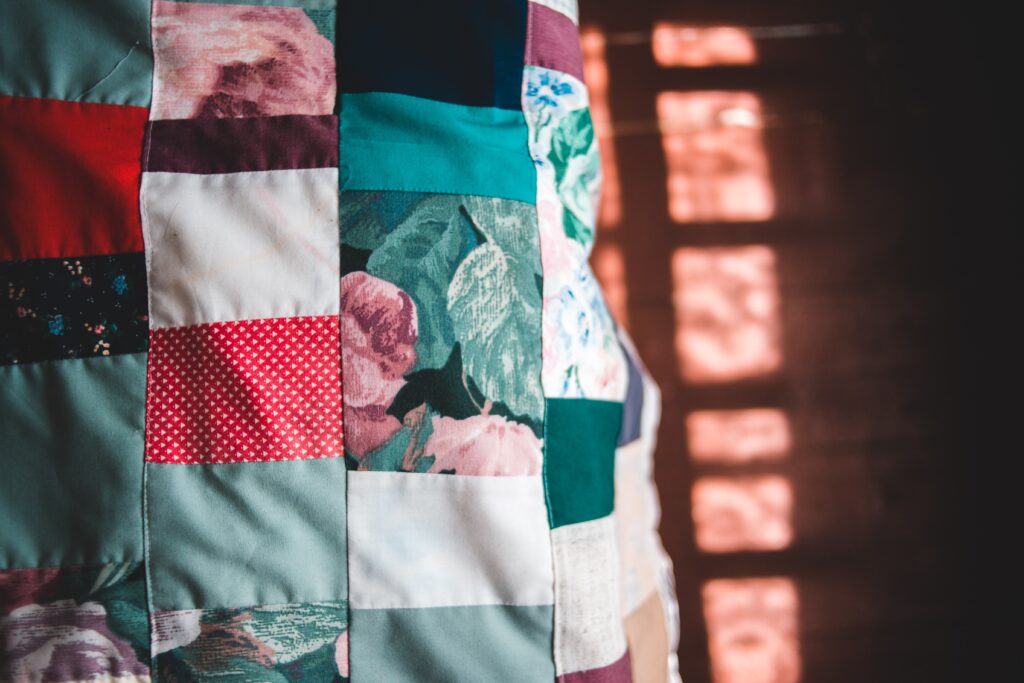
Patchwork is a great place to start your sewing journey. Whilst you can use a simple running stitch, the patchwork effect looks impressive, and it’s something you can show off, or make into thoughtful gifts for friends and family.
Discover an introduction to patchwork and create pillowcases, placemats or blankets to add some colour to your home.
2. Make Your Own Scrunchies
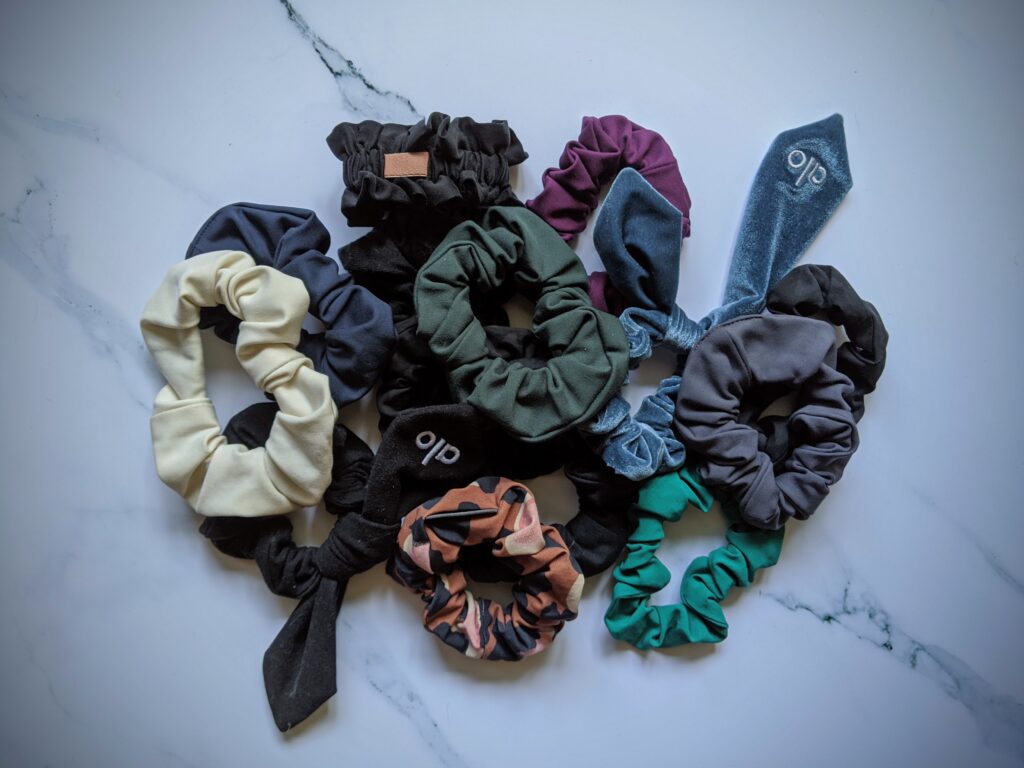
Scrunchies are a quick, easy project for a beginner, using a straight stitch to create a cute accessory that will impress your friends.
Making a scrunchie is as simple as folding a long rectangle of fabric on the long side while inside-out, and stitching lengthways. You can then flip the fabric so the stitching is on the inside of your tube and fill it with a shorter length of elastic. Stitch the fabric and the ends of the fabric into a loop to create your own scrunchie!
Velvet, satin or cotton, you can use whichever fabric you like for this, although some fabrics are easier for beginners to use than others.
3. D.I.Y Coin Purse
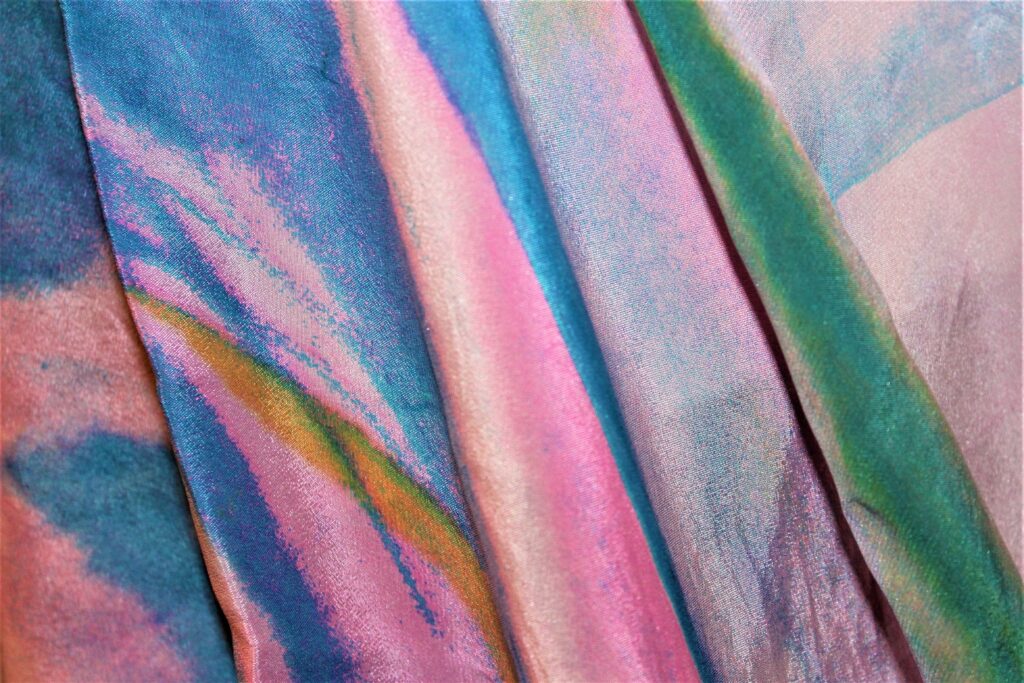
Coin purses are a great starting point for sewing beginners. Whether you choose to make a drawstring pouch or try your hand at zips or poppers, a coin purse is simple but effective.
Choose your favourite fabric and get your sewing machine set up for your first project! Once you have learnt how to sew a coin purse you can move on to bigger and better things, like making your own tote bag or handbag.
4. Create Your First Pincushion
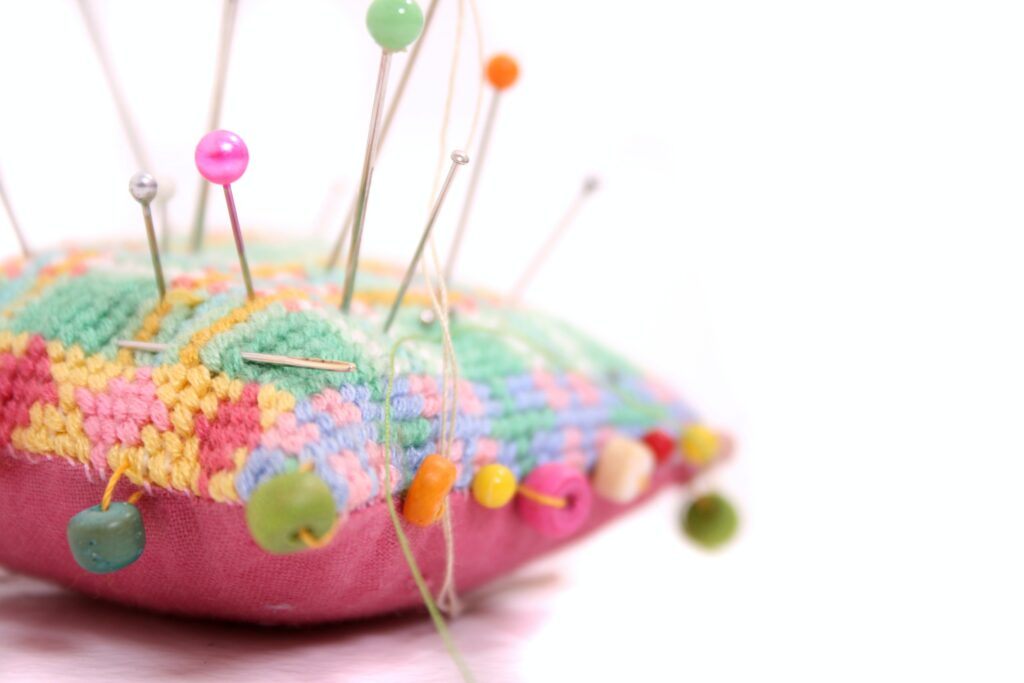
Now you have started your sewing journey, a pincushion is a must-have for all of your future projects. Create your own with your newfound sewing skills.
You can use scrap fabrics for this project (including for the stuffing!), or you can start fresh with the fabric of your choice and a sturdy stuffing that will hold your pins.
A pincushion is a helpful item for your haberdashery stash, but it’s also so simple to make!
5. Follow Your First Sewing Pattern
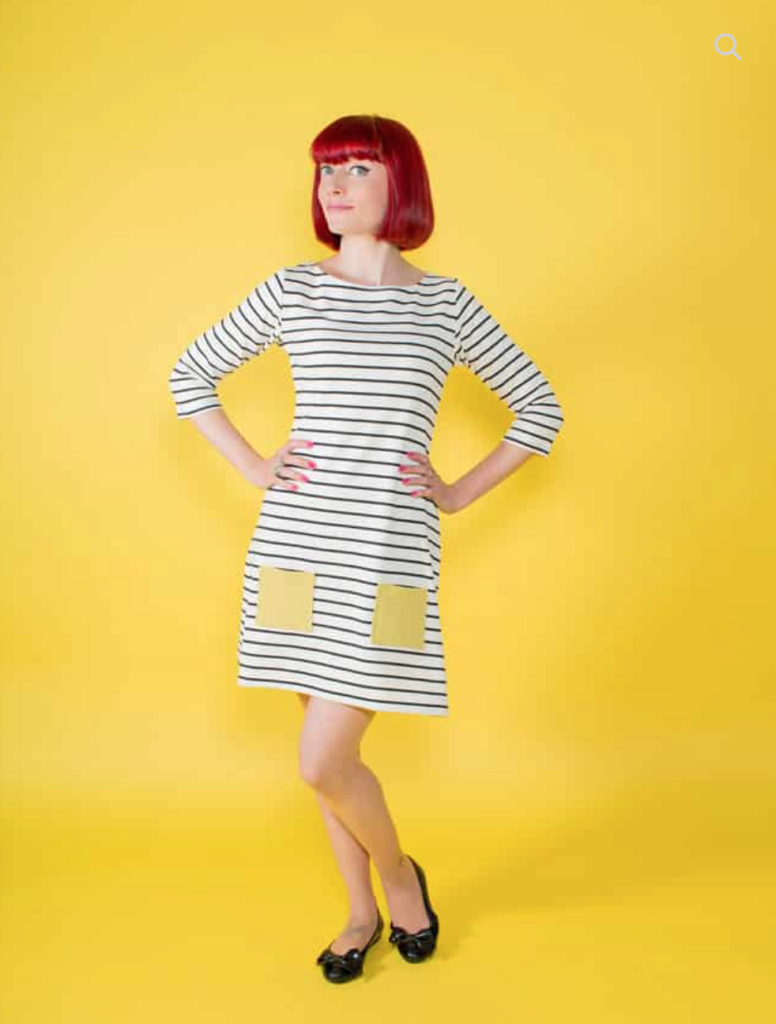
Maybe the reason you started sewing is so that you could begin making your own clothing.
Getting started with sewing patterns is a great way to start making clothing, they provide you with measurements and cut-outs to follow, as well as how-to instructions that will help you create a quality piece of clothing like this Tilly and the Buttons COCO Dress.
Start Sewing Today with Sewing Direct
Sewing is a fantastic hobby to have, and with the right training can turn into more.
Start your sewing journey with Sewing Direct today, and discover a range of easy-to-follow sewing patterns that you can follow to create beautiful clothing.
Find the perfect beginner's sewing machine for you, and begin creating and making at your pace. Get in touch with our friendly team for more information on our sewing machines and haberdashery, or check out our workshops for great introductory classes.
Whether you are making your own garment, or just want to replace a loose button on a jacket, knowing how to sew a button on effectively is a relevant skill.
Buttons can be an important finish to a homemade item that takes it from homemade haberdashery to a high-quality piece of clothing that you will be proud to show off.
Sewing buttons onto your chosen garment couldn’t be easier with help from Sewing Direct.
Sewing on buttons by hand
When repairing a garment, or sewing on limited amounts of buttons, it may feel like sewing your buttons by hand will be the easiest choice, rather than getting out your sewing machine.
Sewing buttons professionally by hand takes a little bit of time and some haberdashery tools. You will need buttonhole thread in your chosen colour, scissors, a needle the correct size for your buttonholes, buttons and your article of clothing.
For a raised button with a singular hole on the back, you should stitch in a circular motion through the button and the fabric. These buttons are best stitched by hand.
How to sew on a button with a sewing machine
Sewing buttons with a sewing machine is much faster than hand sewing a button, and can feel more secure. Sewing buttons by hand can be a time-consuming task, so using a sewing machine can be very beneficial when sewing on multiple buttons at a time.
Firstly set up your sewing machine with the correct colour of thread you would like to use, we recommend using a Singer 9985 Quantum Stylist Touch.
Next check your sewing machine accessories to see if you have a button foot, if you don’t there’s no need to worry, it would just make sewing a button on even easier as it prevents your button from moving during sewing. If you don’t have a button foot just remove the presser foot from your machine.
Now you can begin the process of sewing on your buttons!
Line up your buttons and use a fabric pencil to mark their positions. To hold the button in place you can use clear tape to tape your button to the fabric, the needle will easily pierce the tape and it can easily be removed after you have finished.
Some sewing machines have ‘feed dogs’ on the bottom plate of your machine, these can be lowered to prevent your fabric from moving as you stitch your buttons. For sewing machines like the Bernette 77 Sewing Machine, your feed dogs should lower automatically when the button function is selected.
Next, you can choose your stitch, some machines may have only one option for this. For machines that do not have a button function, you can use a regular zig-zag stitch.
Position your needle above the leftmost buttonhole and lower the foot into place to keep your button secure while you stitch. If your needle goes straight through the middle of each hole when tested then you are ready to add your thread and get stitching, sew 8-9 stitches for an expert finish.
Finally, you can remove the tape that was securing your needle and pull the remaining thread through to the back of the button using a hand needle and knot it securely against the fabric.
Once you have done this a few times you will find that you will get faster at the process.
Now you know how to sew a button using a sewing machine.
Shop Sewing Machines with Sewing Direct
If you are just starting out on your haberdashery journey, or are looking to update your sewing machine, discover our range of sewing machines at Sewing Direct to help you with your sewing projects.
If you don’t know where to begin then get in touch with our friendly team with any questions or queries you may have.
When you have patches, badges or labels that you would like to sew on to an item of clothing it can be difficult to know where to begin. There are so many stitches and fabric choices that it is important to pick the correct technique to avoid damaging the fabric or the patch you are sewing.
No matter if you are planning to sew by hand or with your trusty sewing machine, this guide is here to help. From discovering the correct haberdashery to knowing what stitches to use and when, we’re here to help.
How to sew badges and patches
When receiving a new patch or badge you may be tempted to resort to fabric glue instead of sewing, but fabric glue can warp the shape of the patch and underlying fabric over time as well as losing its stick when put through a wash cycle. Sewing badges and patches is much more secure, and when done correctly can last for years.
Sewing Patches and Badges with a Bound Edge
Bound edges are common in badges and some patches, and they can be challenging to sew through as the edges are so tightly bound. As sewing through the bound edge can either break the needle of a machine or leave you with sore fingers after trying to push the stitches through, the best options are usually to stitch alongside the bound edge, or over the edges.
If you are planning to hand stitch a badge with a bound edge then a whip stitch may be your best option. This will be your best option if you are trying to sew onto a pocket that your sewing machine can’t reach.
Sewing a patch or badge with a bound edge using a machine is quicker if you have multiple to sew at any given time. Choose a zig-zag stitch and set it so the stitches are landing on either side of the bound edge, securing it without trying to sew through the edge itself, which could break your sewing machine needle.
If your sewing machine is an older model, or a straight stitch is your preferred stitch, stitch along the inside of the edge using a similar colour to the background of the badge or patch.
Sewing onto knitted fabric
Knit fabrics are made of interwoven loops, making them more flexible and stretchy than woven fabrics. If you are looking to sew patches on woollen jumpers you should make sure you have a sturdy backing or interfacing on the inside of your fabric to hold your knitted fabric firm and ensure no warping of the fabric happens mid-stitch.
For any internal stitching on knitted fabrics, an overlock sewing machine would be helpful, however for an external addition to your knitted item you could use any sewing machine as long as the fabric will fit. The interfacing will provide a strong background to your stitches, allowing you more options when it comes to choosing your stitches.
Knitted fabric is more delicate than woven fabric in that it is very easy to pull or cut a stitch accidentally. First, pin your interfacing onto the inside of your knitted garment.
Next, try using a jersey or ballpoint needle, the rounded tip won’t snag on any knitted fibres. If you don’t have a ballpoint needle to hand try out the needles you do have on an inconspicuous area of your fabric to test out which works best for you.
Finally use a stretch stitch or zig-zag stitch along the edges of your patch or badge, the zig-zag format works against the natural elasticity of your knitted fabric. You may want to test different stitch lengths on a hidden piece of your fabric first to make sure you get it right when you begin sewing the patch.
How to sew labels onto garments
Knowing how to sew on clothing labels can be useful if you have started to make clothing, either as a hobby or to sell. Labels remind people of where they found your brand, or what the washing instructions for that particular item are.
Hand stitching a clothing label
Hand stitching a clothing label is more delicate than using a sewing machine might be. Firstly you should find your smallest needle and thread for the task, you want your label to look seamless.
Positioning your label should be an easy task. If you are looking to sew a neckline label, measure an equal distance between the shoulders, or line it up with pre-existing buttons or zips. Once you have found your ideal label position, pin it in place to secure it.
Start stitching your label by adding secure stitches to the two top corners of the label. If you’re planning to completely secure the label on all four sides you can add secure stitches to all four corners at this point.
Now you can border stitch along the sides you wish to secure. To create a secure border you can use a variety of border stitches, from a regular running stitch to more decorative stitches such as a blanket stitch, they’re easy to learn.
Hand stitching is a great way to secure a label, but if you plan to stitch multiple labels a machine may save you time.
Machine sewing clothing labels
Sewing labels using a machine is much faster if you are looking at stitching multiple labels at the same time.
To be able to sew your label with a sewing machine your label needs to be big enough for the stitch length of your machine, if the label is smaller than the foot of your sewing machine you will not be able to hold it in place as you stitch. If your labels are too small you can hand stitch the corners of your label to secure it before running it under your sewing machine, this will prevent it from moving around.
When using a sewing machine to label clothing there are a few things to remember:
- Always run a piece of scrap fabric through your machine first, you don’t want to find out there’s an issue with your sewing machine mid-labelling.
- Lock in your ends. When you begin to run your label under the sewing machine lock the first corner in with a few backstitches before continuing to forward stitch. Repeat this process when you reach the end of your label, it helps to make sure each corner is secure.
Shop Sewing Machines and Haberdashery with Sewing Direct
Discover our range of sewing machines and haberdashery products at Sewing Direct to help you complete your sewing projects with ease. If you’re not sure where to start, get in touch with our helpful team for help with any questions or queries you may have.
Baby Lock is the newest addition to the Sewing Direct catalogue, bringing a wide range of sewing machines and accessories perfect to suit your sewing needs whatever your project or skill level is.
What is Baby Lock?
Founded in 1946 by Nick Tacony, the Baby Lock mission was to create a smaller and more convenient overlock serger, compared to the ones available at the time. Over the next 50 years, Baby Lock continued to grow, developing over 14 patents.
Since then, Baby Lock has gone on leaps and bounds, introducing over 12 new models and systems, online sewing classes and even app-based technology, making it a great choice for those looking to invest in their newest sewing machine.
Why should I choose a Baby Lock sewing machine?
With so many different models available in the Babylock collection, there is something for everyone. Whether you’re a beginner starting out on your sewing journey, or an expert sewer looking to expand your collection with a new machine, Baby Lock is the perfect choice to make your next creation come to life.
We have put together a short list of the top 3 Baby Lock products that are worth taking a look at if you are on the hunt for a new sewing machine.
Baby Lock Euphoria
Baby Lock Euphoria is a great option for those wanting to perfect their cross stitch. With features including an automatic thread delivery system, an air threading system for the looper and a needle threader - it's the perfect tool to bring your creations to life.
This Baby Lock sewing machine is especially great for sewing larger pieces of fabric meaning there is even more scope to get creative no matter what you want to make. Also great for use with a multitude of different threads, from yarn to ultrathin thread - the euphoria will ensure your projects are looking expertly sewn.
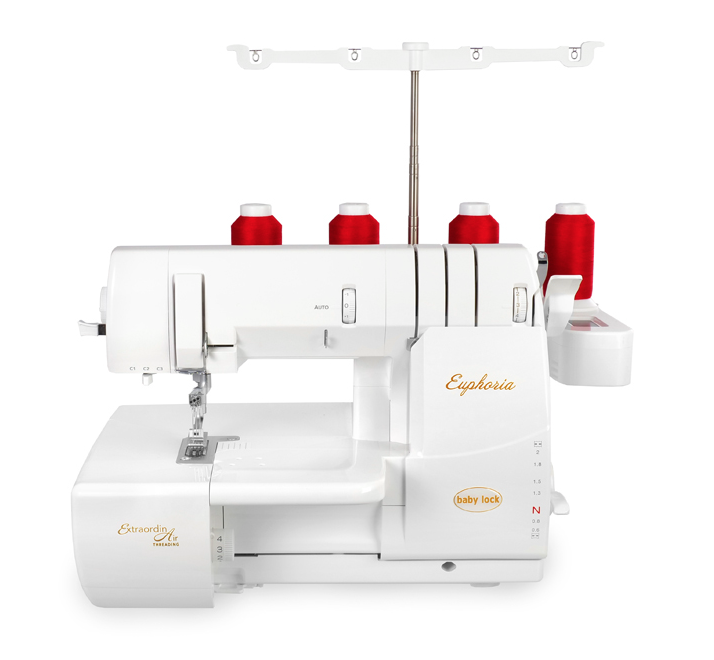
Baby Lock Embellisher - Felting machine
Perfect for beginners and experts wanting to get creative with felt - the Baby Lock Embellisher Felting Machine is perfect for creating gifts for your family and friends. The only felting machine on the market with an automatic feed feature.
The built-in yarn guide feeds yarn continuously through the middle of the needle head whilst guiding it through the machine's yarn pot directly to the needle. This leaves your hands free to move the fabric in any direction, guiding the yarn to your desired place.
With easy clean features and 12 barbed felting needles to use across different fabrics, this is a great Baby Lock sewing machine for those wishing to experiment with felting projects.
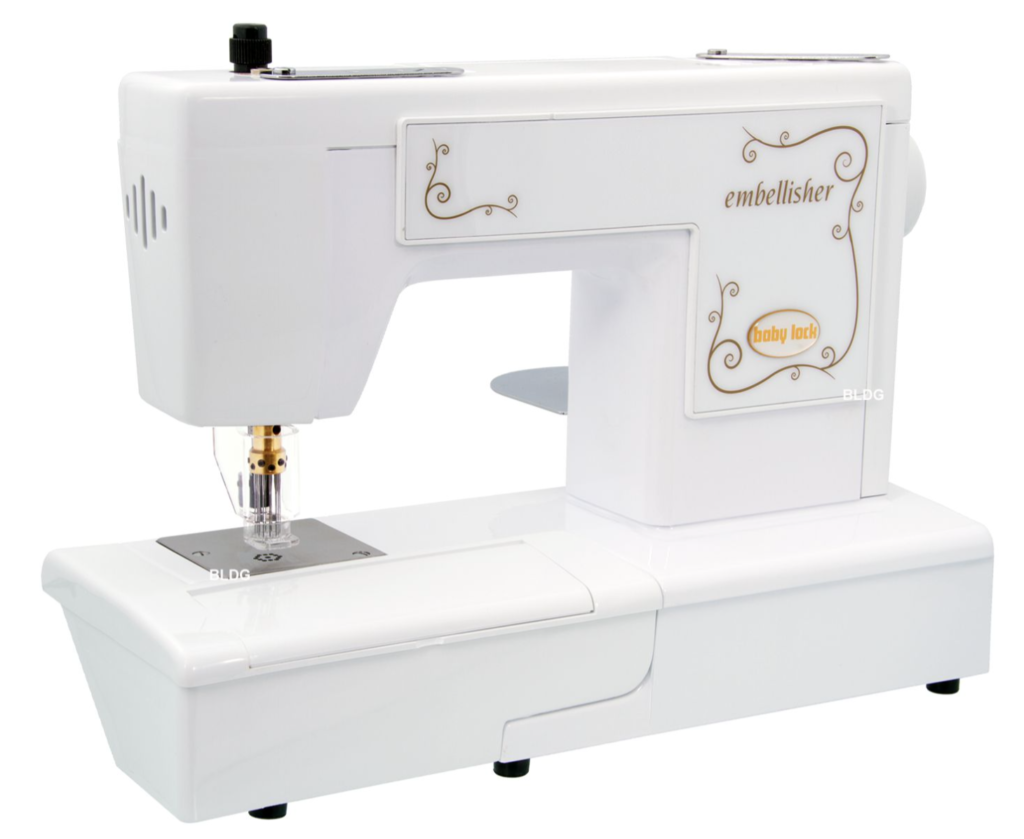
Baby Lock Enspire - Overlocker - Air Thread
With four stitches and over 1500 stitches per minute, the Baby Lock Enspire Overlocker Air Thread can get your creations brought to life in no time! Featuring a unique tubular system and industry quality extra strong loopers, you can be confident knowing the Baby Lock Enspire can handle projects from small to more difficult tasks.
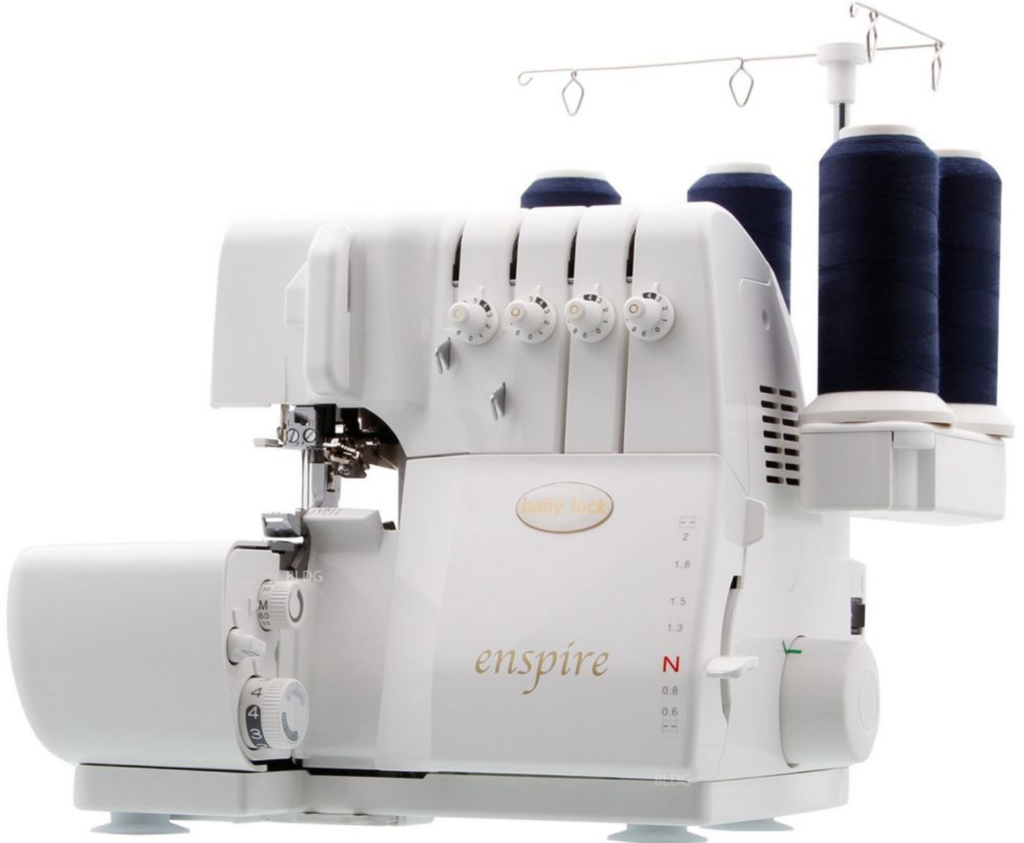
Ready to start your Baby Lock journey?
We are excited to now stock a range of Baby Lock sewing machines and accessories for all skill levels. Get in touch today if you have any questions on our ranges, or give our Mansfield shop a call on 01623 626478 to arrange a demonstration.
Here at Sewing Direct, we have many different sewing machines available from brands including Singer and Bernina, so you can get creative no matter what your preference of machine is.
When deciding you want to begin machine quilting for the first time, it isn't always as easy as just picking up the machine and getting going. Quilting requires a great deal of practice and patience. This guide is full of tips and tricks for showing you how to make a patchwork quilt.
Our top tips and tricks for making a quilt with a machine
Start small
The key thing to remember is that starting small doesn't mean your quilt won't be as fantastic as you hope, it means you can save yourself the frustration down the line with copious amounts of fabric you struggle to manage. We suggest that a good size is between 36-50 inches of fabric as the best size for starting out.
Safety pins will be your best friend
Even the simplicity of laying everything flat ironed, and over-pinned can make a huge difference when flattening out the layers of fabric and will help give you more visibility when sewing with the machine.
Stay simple
Keeping a simple pattern will help you keep your quilt neater as when starting out, it's not out of the ordinary to cross over the lines frequently. When mixing a lack of experience with a complex pattern, you could find yourself confused and mixed up.
Sew in the same direction
As well as starting in the centre and working outwards, we also recommend sewing in the same direction each time to avoid unwanted texture and pulling, which can cause a great deal of tension across all the quilt.
Experiment
Remind yourself that trial and error is perfectly ok. Before you get going, it's good to create some test pieces to familiarise yourself with the processes required without having to worry about messing up on your first proper quilt attempt.
Go Slow
Sewing is as much a test of patience as skill. Slamming your foot down and getting it done as quickly as possible will result in the fabric puckering and becoming very untidy. A good thing to remember is that slow and steady wins the race when it comes to sewing.
Remember to have fun
It can be intimidating when getting started on a quilting project, especially not knowing all the tips and tricks. However, it is important to remember that practice makes perfect, and skill will develop over time. To kickstart your skill development in quilting, check out our lessons page to learn more about quilting and many other sewing skills.
Get Started with Making Your Patchwork Quilt with Sewing Direct
We have a wide range of machines perfect for quilting, especially our Bernina S-570qe or the Bernina S-590 along with many other options suitable for your needs.
Be sure to check out our Patchwork & Quilting products to enhance your hobby further.
Are you passionate about sewing and want to take your hobby to the next level? Whether you’re an experienced sewer or an enthusiastic beginner, we have the perfect sewing accessories to help you improve your skills and to make your life a little bit easier for you.
Our top 5 Sewing Accessories
Looking for where to buy sewing accessories? Well, look no further than our collection of accessories on our online store. We stock a range of accessories from multi-tool organisers to the best extension tables on the market, see five of our top picks below.
Prym Love Multi Organiser

Never misplace a bobbin or pin again with the Prym Love Multiple Organiser. Not only is it great for organising your bobbin, but it is also a magnetic pin cushion nest, so it can not only be used separately but also together. The Bobbin rings hold up to 30 bobbins securely and prevent threads from unwinding, making your life whilst sewing so much easier.
Sew Deluxe Leg Form 8 Part - Adjustoform
Whether you are attempting to create a fashion masterpiece or just looking to develop your sewing skills, this Adjustoform Sew Deluxe Leg Form is the perfect addition to your sewing kit. The Adjustoform features an 8-part form with legs making it ideal for use in sewing jackets, skirts, long and short dresses, and coats and with the important additional feature of trouser fitting.
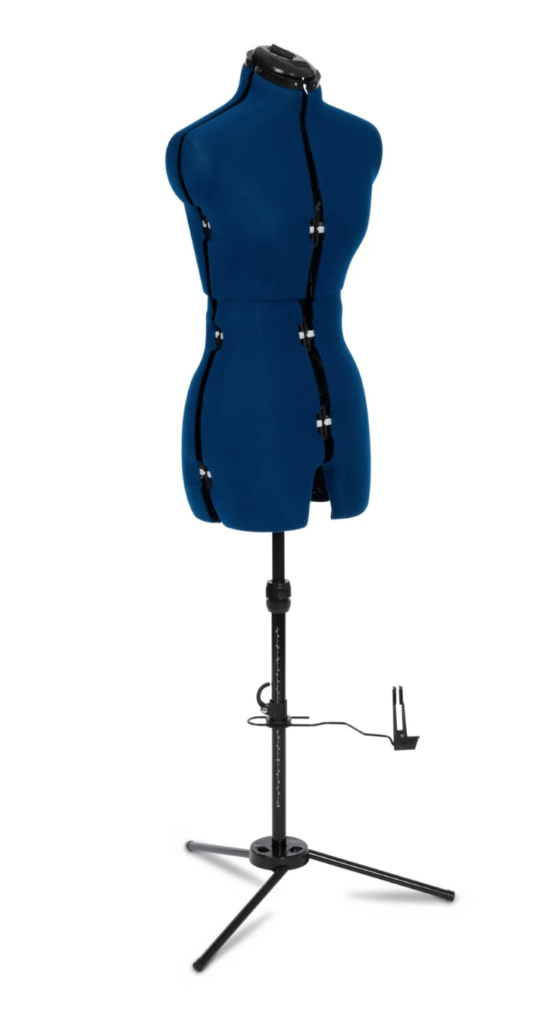
Singer Heavy Duty Extension Table
Boost the performance of your Singer sewing machine with the Singer Heavy Duty Extension Table – a sturdy, robust and project-enhancing accessory tailor-made for the Singer Heavy Duty range.
This accessory is designed to perfectly fit the Singer Heavy Duty machines, making it easier to handle larger pieces of fabric. This makes it an essential accessory for quilting, embroidery and other large projects. Not only does it make your sewing projects easier – it helps you complete them quicker, too!
Interested in Singer Sewing Machines? Take a look at our blog highlighting the 5 Singer Sewing Machines.
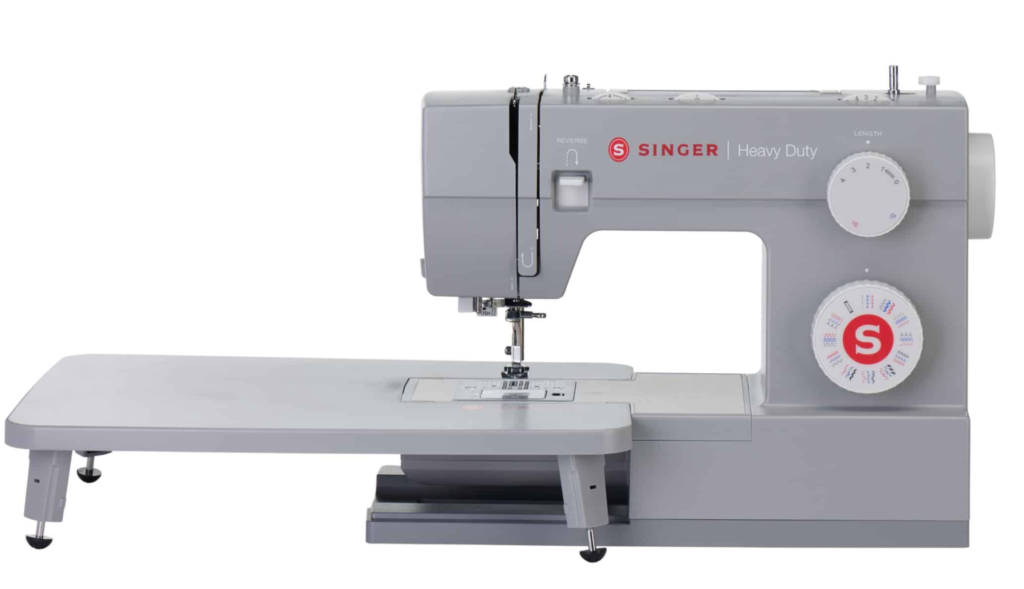
OLFA® Rotary Cutter
The OLFA rotary cutter is a combination of comfort, convenience and strength combined with safety. Its ergonomic handle with anti-slip rubber grip eliminates hand fatigue and stress, while the squeeze trigger allows the blade to self-retract for safety. The cutter can handle up to six layers of thin materials and the quick blade change feature won't slow you down when working on your project.
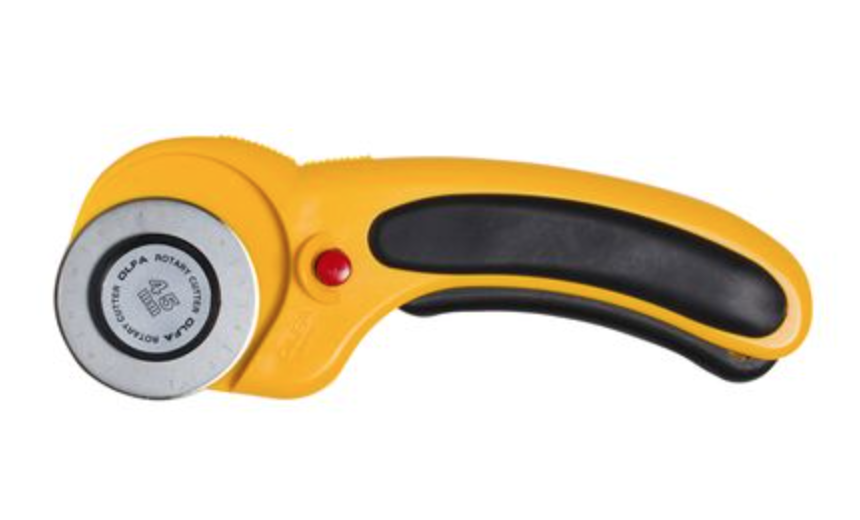
Shop the best selection of sewing accessories at Sewing Direct
Find these along with many more inspiring sewing accessories and machines right here at Sewing Direct and if you are unsure of which machine suits your sewing & embroidery needs, speak to a member of our friendly team who are more than happy to help find the perfect machine for you.
Whether you’re an accomplished sewer, or a bit of a newbie, everyone needs a sewing machine that can help turn your creative visions into a reality. It is important to choose the correct brand so you can be sure your machine has the capabilities you need to make your projects a success.
Which sewing machine brands do we recommend?
It can often be confusing when it comes to picking out the best sewing machine brand for you. With so many on the market to choose from, how do you know which one is right for you?
With our quick guide to sewing machine brands available on the market, you can be sure you will find your best sewing machine yet here at Sewing Direct.
Singer Sewing Machines
Singer sewing machines have been at the forefront of the sewing machine industry since 1851, with founder Issac Singer owning the patent on the first practical sewing machine. Since then Singer has gone from strength to strength, becoming industry leaders when it comes to sewing machines and accessories.
Singer offers a wide range of sewing machines, perfect for beginners all the way up to advanced sewers meaning there's something on offer for everyone. Try the Singer C240 sewing machine featuring built-in LED Lights, 70 integrated stitches, and a self-adjusting stitch tension.
Bernina Sewing Machines
Bernina sewing machines are perfect for those wanting to explore outside of sewing when it comes to their creative project’s. Founded in 1893, swiss brand Bernia is now one of the most sought after machines, trusted around the world for their precision and reliability.
With over 30 machines and over 100 accessories to choose from, Bernina machines are the best choice if you are looking for a machine personal to you and your projects.
Supplying sewing machines such as the Bernette b33 Sewing Machine at £199 all the way to the Bernina 880 sewing machine at £7,600 there really is something for everybody no matter your level.
Pfaff Sewing Machines
German brand Pfaff produce sewing machines that are the perfect choice for those wanting to step up their creativity on their next project. With a range of machines to suit all types of budgets, Plaff really is a great choice when it comes to purchasing your next sewing machine.
If you are thinking of doing a little more than sewing on their next project, Plaff is the brand for you. As well as the range of Pfaff sewing machines that are popular amongst sewers, Pfaff also has a range of embroidery machines to help give you the edge on all your sewing projects.
Know what you're looking for from your next sewing machine?
Find a wide variety of options right here on our online store, including Singer, Bernina and Pfaff alongside a range of other popular sewing machine brands. Get in touch and our team would be more than happy to help with any questions about our machines or other products here at Sewing Direct.
Looking for a new sewing machine but not sure what to get? Well look no further, this guide of the top 4 performing Bernina sewing machines will give you all the information you need to make a decision and get your best sewing machine yet.
Who is Bernina?
Bernina is a globally recognised manufacturing company, producing sewing and embroidery systems. First originating from Switzerland, Bernina now sells thousands of machines a year with a revenue of 267 million. With high levels of brand loyalty, many customers have every confidence in Bernina and wouldn't be without one of their many sewing machines on the market.
Bernina caters for everyone with their machines, so whether you’re just starting out and sewing for a hobby, or are working within the sewing industry, you can rely on Benina for a machine that you can trust. Bernette, a label run by Bernina stocks a great selection of sewing machines for beginners.
With so many sewing machines on the market, we know it can be confusing to know which one to pick. Therefore we have decided to do a run down on the top 5 sewing machines Bernina has to offer.
Top 5 Bernina Sewing Machines for your every need
Bernette b33 sewing machine
The Bernette b33 sewing machine is the perfect choice for beginners, who are getting to grips with sewing. At an affordable price range, the bernette b33 offers all the basics of a first sewing machine, but still provides customers with a high quality machine that they can trust.
There are many superb features with the bernette b33, including 15 built in stitches, drop feed and an automatically winding bobbin, just to name a few. With a built in needle threader and accessible threat cutter the b33 makes it easy to set up and get creative with your latest sewing project.
Bernina 770 Quilters Edition PLUS Sewing Machine
The Bernina 770QE is arguably a sewing machine perfect for all the pro’s out there. With a twist on the traditional sewing machines on the market, the Bernina 770 offers additional quilting stitches so you can take your sewing projects to the next level.
With a full colour touchscreen, 1,809 sewing stitches and 74 built in quilting stitches this is the perfect machine for not only sewers but also quilters and embroiderers. The Bernina 770 handles both light and heavy fabrics with ease, making for a smooth and accurate usage for all the creative projects you have your eyes on.
Bernette b38 Sewing Machine
The Bernette b38 sewing machine is another stand out for beginners and could soon be your best sewing machine yet. The Bernette b38 tops the b30 range with many standout features.
Similarly to the Bernette b33, the b38 is a great choice for beginners, however with the addition of a digital display and a larger variety of stitches, 394 to be exact. The machine also has an automatic thread cutter and tie-off feature.
This sewing machine is the perfect choice if you're looking for something high quality and a bit more advanced than the very basics, whilst still falling within an affordable price range.
Bernina 335 Sewing Machine
Sitting in the mid-range price for Bernina sewing machines, the Bernina 335 sewing machine is a fantastic machine for beginners and competent sewers. With simple threading processes, 900 stitches per minute and automatic buttonhole sewing this machine is going to get your creations from your head to the real world in no time at all.
The machine also features a free hand system, LED display and semi-auto needle threading allowing you to be at ease knowing the machine is working with you and not against you on those all important projects.
Bernina 735 Sewing Machine
The Bernina 735 Machine is one for advanced sewers. With a pricier budget, this machine offers all the advanced features you would expect, making it perfect for those with bigger projects to bring to life. With a 7 inch full colour display, premium stitching technology and consistent stitching at any speed it is easy to see why this is such a popular machine amongst professionals.
This machine is top-of-the-line for sewing garments, as well as on quilting.
The Bernina 735 can also be used for embroidery tasks by simply purchasing the embroidery module, opening up a whole new world of creativity for you and your machine.
Know what you're looking for from your next sewing machine?
Find a wide variety of options right here on our online store, including Singer, Bernina and Pfaff sewing machines. Get in touch if you have any questions about our sewing machines.
We get asked a few times when the Great British Sewing Be is on what sewing machine they use on the Sewing Bee?
Below is a list of sewing machines that are very similar to the Sewing Bee Sewing machines
In the Pfaff Sewing Machine range, we have
Pfaff Smarter 140s - https://sewingdirect.co.uk/product/pfaff-smarter-140s-best-starter-sewing-machine/
- Needle Thread
- Top loader bobbin
- Jam proof
- Foot Pressure adjustment
- Drop Feed – for free motion
- Led Lighting
- Easy Grip Adjustment
- 3 step manual buttonhole
Pfaff Smarter 160s - https://sewingdirect.co.uk/product/pfaff-smarter-160s/
- Needle Thread
- Top loader bobbin
- Jam proof
- Foot Pressure adjustment
- Drop Feed – for free motion
- Led Lighting
- Easy Grip Adjustment
- 1 step automatic Buttonhole
Pfaff Ambition 610 - https://sewingdirect.co.uk/product/pfaff-ambition-610-free-extension-table/
- 110 built-in stitches
- 29 needle positions
- 1-step buttonhole
- Intuitive button controls
- LCD display
- Large sewing space for greater ease of use
- Start/Stop button with speed slider control for pedal-free adjustment
- Adjustable thread tension
- LED-lit sewing area
- Free-motion sewing
In the Singer Sewing Machine Range.
Singer Heavy Duty 4423 Sewing Machine - https://sewingdirect.co.uk/product/singer-heavy-duty-sewing-machine-model-4423/
This is what the chaps used as their home sewing machine. 😉 (2022 Sewing Bee)
23 Built-In Stitches
• Fully Automatic 1-Step Buttonhole
• Adjustable Stitch Length and Width
• Automatic Needle Threader
• Adjustable Presser Foot Pressure
• Drop Feed System
• 4 Snap-On Presser Feet
• Free Arm with Accessory Storage
• Horizontal Thread Delivery
• Extra-High Presser Foot Lift
• Provision for Mounting in Cabinet or Table
Singer 3321 Sewing machine - https://sewingdirect.co.uk/product/singer-model-3321-talent-keeping-it-simple-with-the-talent/
- 21 preset stitch patterns
- Automatic needle threader and 4-step buttonhole
- Personalise the stitch length and width with an easy-to-use dial
- Top drop-in bobbin
- Robust, high-quality metal frame
- Integrated storage
Singer Confidence 7463 Sewing machine - https://sewingdirect.co.uk/product/singer-confidence-7463-sewing-machine/
- Entirely computerised
- 30 distinct stitches
- Automatic needle threader and tension adjustment
- Easy to use top loader bobbin
- Simple button press for stitich selection
In the Bernette Sewing Machine
Bernette B33 Sewing Machine - https://sewingdirect.co.uk/product/bernette-33-sewing-machine/
- 15 built-in stitches with 14 utility stitches
- Drop feed
- Automatically winding bobbin
- Adjustable stitch length and width
- 4-step buttonhole sewing
- Built-in needle threader
- LED-lit sewing area
- Manual thread cutter
- Sews up to 860 stitches per minute
- Twin needle function
Bernette B35 Sewing Machine - https://sewingdirect.co.uk/product/bernette-35-sewing-machine/
- Automatic 1-step buttonholes
- 2-step presser foot lift - easily sew through multiple fabric layers
- Ergonomic design
- 23 stitches including 14 utility stitches
- High piercing power
- Adjustable stitch length
- Built-in needle threader
- LED-lit sewing area
Still unsure which machine is the right one for you? Take a look at the range of sewing machine brands we offer.
If you need any further assistance, please either give us a call 0115 922 3904 or jump on the web chat. If you would like to see more machines please click here